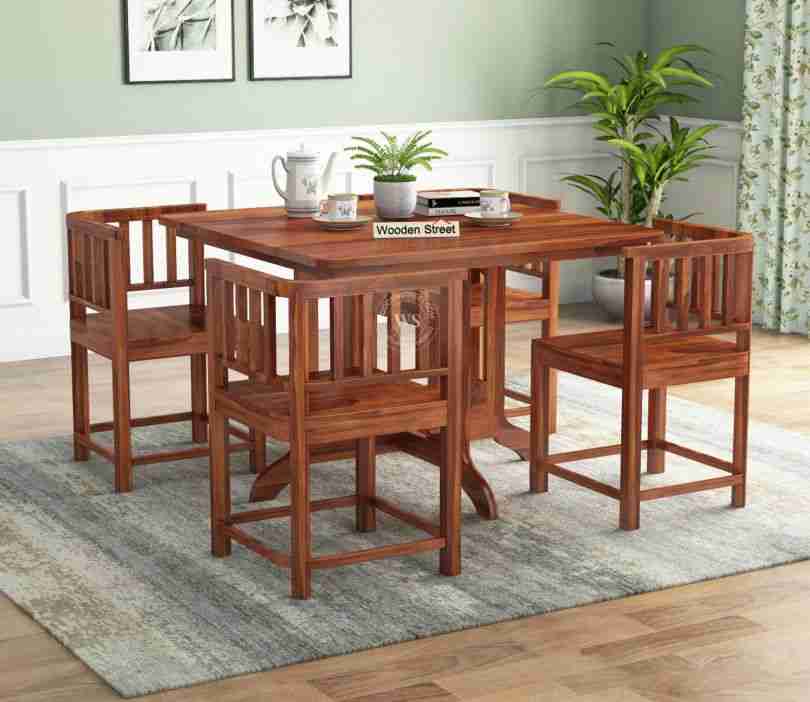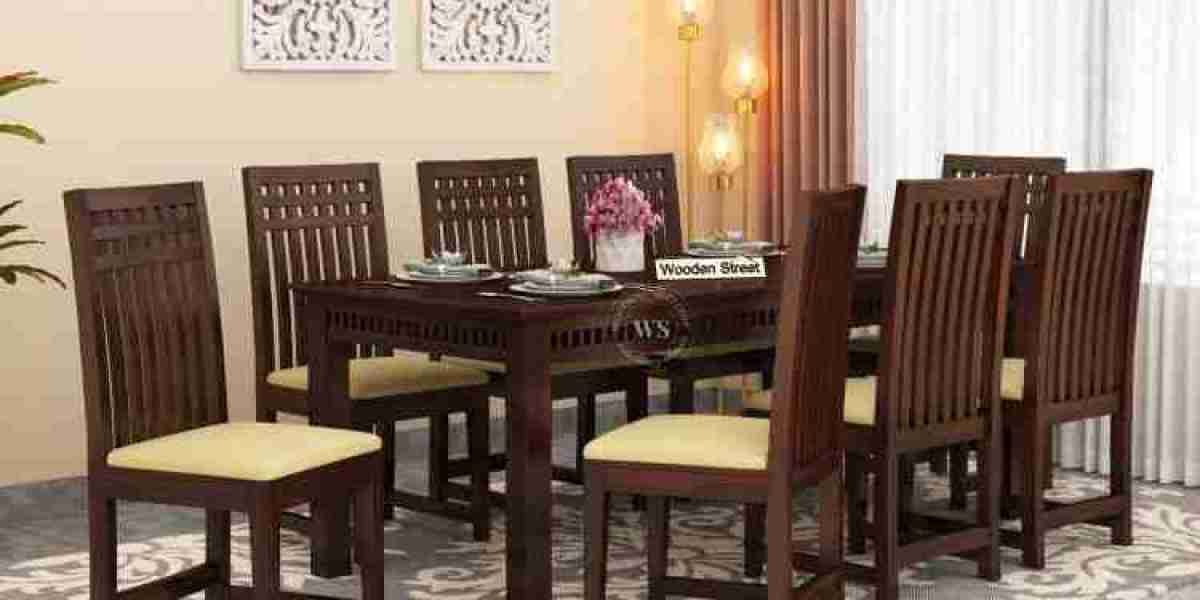A dining table is more than just a piece of furniture—it’s the heart of your dining space, where family meals, conversations, and special gatherings take place. Choosing the right dining table design involves considering factors such as space, style, material, and functionality. Whether you’re looking for a sleek modern table, a timeless wooden design, or a space-saving option, selecting the perfect one requires careful planning.
Here’s a comprehensive guide to help you choose the best dining table design for your home.
1. Determine the Available Space
Before selecting a dining table, measure your dining area to ensure the table fits comfortably. Consider leaving at least 3 feet of clearance around the table for easy movement. If you have a compact space, consider extendable or round tables that maximize seating while minimizing bulk.
Tips for Space Planning:
- Use masking tape or paper cutouts to visualize the table’s dimensions in your space.
- Opt for a rectangular or oval table in narrow dining areas to improve flow.
- Round and square tables work best in smaller, more intimate spaces.
2. Choose the Right Shape
The shape of the dining table plays a crucial role in defining the aesthetics and functionality of your dining area.
- Rectangular Tables: The most common choice, ideal for large dining rooms. These tables accommodate more people and provide a structured, elegant look.
- Round Tables: Great for smaller spaces and encourage conversation since everyone is equally seated around the table.
- Square Tables: Best for compact spaces and modern homes with a balanced layout. They create a cozy dining experience.
- Oval Tables: A mix between rectangular and round tables, offering a softer look while maximizing seating capacity.
3. Select the Right Material
The material of your dining table influences its durability, maintenance, and overall aesthetic.
- Wood: Classic, durable, and available in various finishes like teak, oak, and walnut. Perfect for traditional and contemporary interiors.
- Glass: Creates an open, airy feel and adds a touch of modern elegance. Easy to clean but requires regular maintenance to prevent smudges.
- Marble: Luxurious and timeless, but heavier and requires more care to avoid stains. Ideal for high-end dining spaces.
- Metal: Industrial and contemporary, often paired with wooden or glass tops for a stylish contrast.
- Engineered Wood: An affordable alternative to solid wood, offering durability and a sleek finish for modern homes.
4. Consider the Seating Capacity

Your dining table should comfortably accommodate your household while allowing extra space for guests. Here’s a general guideline:
- 2-4 people: Small round or square table (36-48 inches in diameter).
- 4-6 people: Rectangular table (60-72 inches in length).
- 6-8 people: Larger rectangular or oval table (72-96 inches).
- 8+ people: Extendable or oversized tables for hosting large gatherings.
If you frequently entertain guests, an extendable dining table is a great option, allowing flexibility in seating arrangements.
5. Match Your Interior Style
Your dining table should complement the overall theme of your home.
- Modern Interiors: Opt for glass, metal, or marble-top tables with clean lines and minimalist designs.
- Traditional Homes: Solid wood dining tables with intricate detailing and warm finishes suit classic interiors.
- Industrial Style: A mix of wood and metal with raw, rustic elements enhances an urban aesthetic.
- Scandinavian Design: Lightwood finishes, sleek legs, and neutral tones create a cozy and inviting dining space.
- Luxury Interiors: Marble or high-gloss finish tables with elegant bases add sophistication.
6. Look for Functional Features
A well-designed dining table should meet your lifestyle needs. Consider these features:
- Extendable Tables: Ideal for homes with limited space but occasional guests.
- Storage Tables: Some modern tables come with built-in storage for extra convenience.
- Convertible Tables: Adjustable-height tables that can function as coffee tables when needed.
- Foldable Designs: Perfect for compact apartments and studio spaces.
7. Consider Maintenance and Durability
A dining table should be easy to maintain and durable enough to withstand daily use.
- Wooden tables require periodic polishing to maintain their finish.
- Glass tables need regular cleaning to prevent fingerprints and smudges.
- Marble tables should be sealed to protect against stains.
- Metal tables are low-maintenance but can show scratches over time.
8. Budget and Quality
Set a budget before shopping for a dining table. While solid wood and marble tables are more expensive, engineered wood and glass options provide affordability without compromising on style. Investing in a high-quality table ensures long-term durability and value for money.
Conclusion
Choosing the best dining table design for your home involves balancing aesthetics, space, functionality, and durability. Whether you prefer a modern, traditional, or luxury style, selecting the right shape, material, and size ensures a comfortable and stylish dining experience.
Explore a variety of dining table designs at Wooden Street to find the perfect one that complements your home’s décor and lifestyle.




